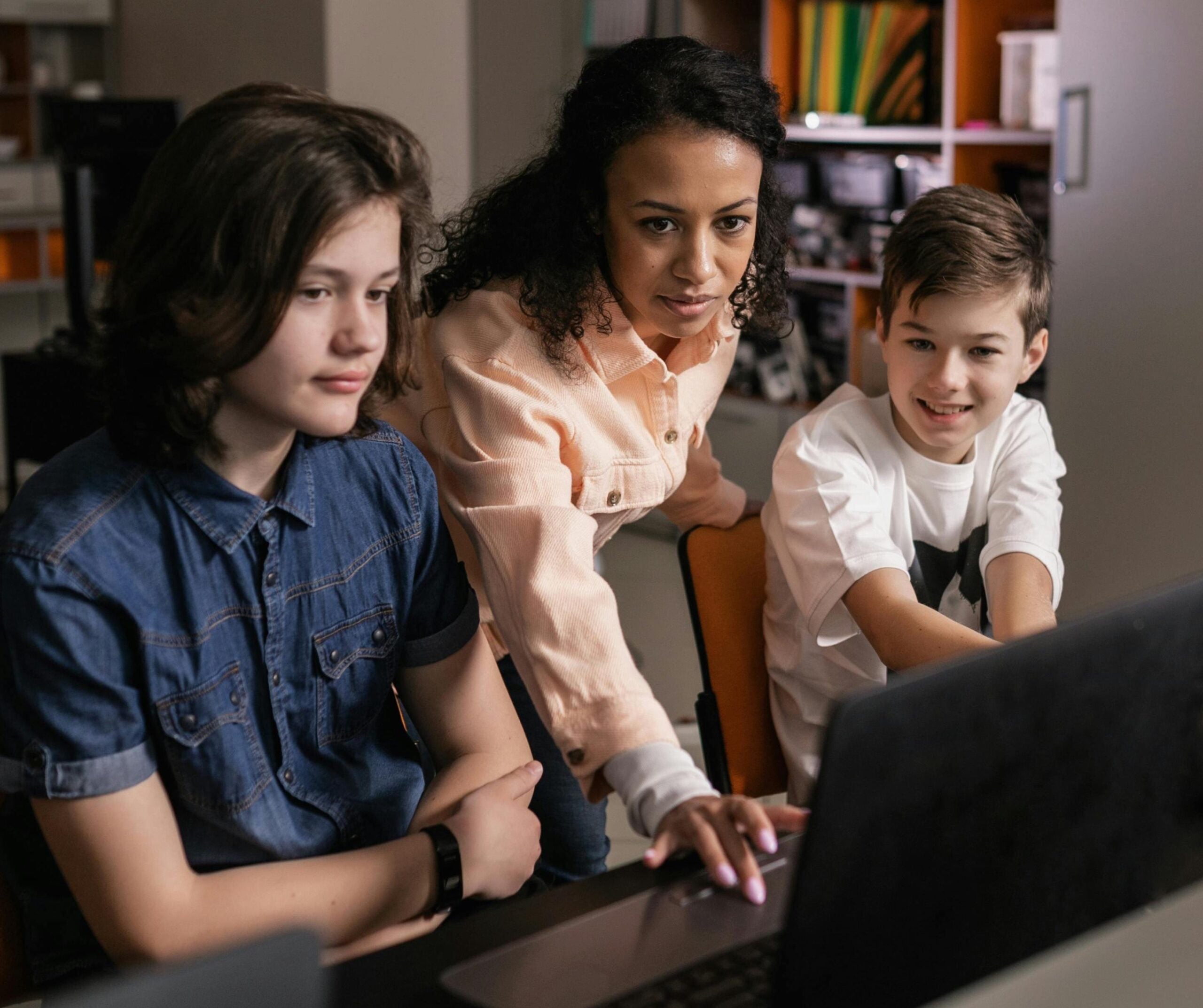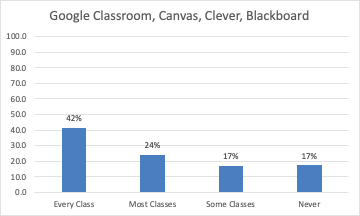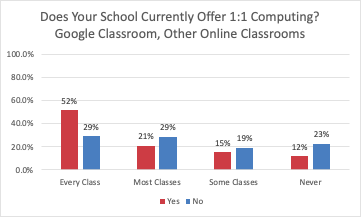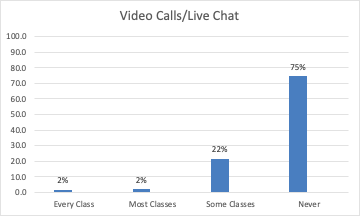Digital Tools in the Classroom and COVID-19

By Chelsea Sanchez
According to a recent Gallup poll, 65% of American teachers say they use digital learning tools to teach every day. 85% of teachers also stated that they either fully or somewhat supported the increased use of digital learning tools in their school. There is little data, however, on the use of digital tools by social studies and civics teachers. Furthermore, in light of recent efforts to implement digital learning in order to protect students and teachers from the spread of COVID-19 (coronavirus), understanding the efficacy of digital tools in the classroom has become essential.
The Study
From Chalkboards to Message Boards: Digital Tools and Civic Education in Classrooms, an upcoming report by Dr. Diana Owen and students of Georgetown University’s Communication, Culture & Technology MA Program, examines the use of digital and conventional tools in civic education classrooms. The study sought to understand the teachers’ grasp of these tools and assessed how the technology they use affects their teaching practices. The study also identified successful tools used in civic education. Data were collected through a survey administered online to a sample of 1,400 civic education teachers recruited from the networks of the Center for Civic Education and the Bill of Rights Institute.
Key Findings

What Teachers Used:
- 98% of teachers used digital tools of some type in the classroom
- Nearly 40% of teachers used online videos in most classes
- Public school teachers (51%) were more likely to use learning apps in some classes than private school teachers (43%)
- Nearly 52% of schools that offer 1:1 used Google Classroom or another online classroom in every class, while only 29% of schools that do not provide devices to all students use Google Classroom, or another online classroom in every class
What Teachers Didn’t Use:
- Prior to the COVID-19 pandemic, nearly 80% of teachers never used video calls or live chat
- 78% of teachers never used Padlet
- 82% of teachers never used Nearpod
Figure 1

The use of online videos in social studies and civics classrooms is pervasive. Slightly over half of civics teachers use online videos in most (13%) or every (39%) class. An additional 46% of teachers used online videos in some classes. Notably, only 2% of teachers never use online videos in class. Teachers’ frequent use of online video indicates that video content is an essential and effective element of the civics curriculum (Figure 1).
Figure 2

Classroom management platforms, such as Google classroom, are frequently used by civics teachers. 66% of teachers use a classroom management platform during every or most classes–42% in every class and 24% in most classes. 17% use Google Classroom or another online classroom in either some classes or never (Figure 2).
Figure 3

Schools that offer 1:1 computing, where students are given an electronic device that allows them to access digital content, are significantly more likely (52%) than schools that do not (29%) to use online classrooms in every class. Classrooms that do not offer 1:1 computing (23%) are more likely to never use an online classroom than those that do (12%)–an 11 percentage point difference (Figure 3).
Figure 4

Video calls and live chat were rarely used by civics teachers prior to the COVID-19 pandemic. Three-quarters of civics teachers never used video calls or live chat in class. Of the remaining quarter or teachers who did use the tool, only 2% of teachers used it in every class or in most classes.
